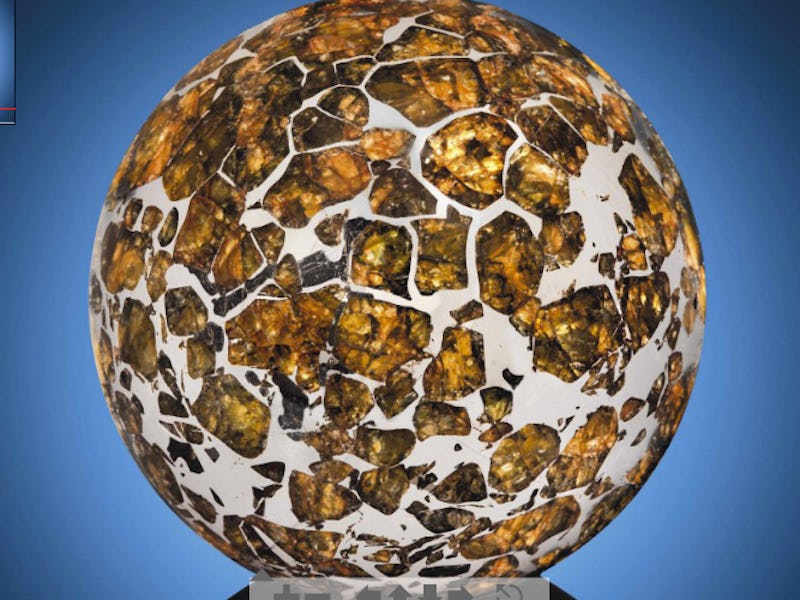The Cheap Meteorite Market Is Booming but Billionaires Are Ignoring Space Rocks
More regular people, fewer multi millionaires, are getting pumped about space junk.

This week, Christie’s auction house in London had an uncharacteristically disappointing day. The most-valuable meteorites in a valuable meteorite auction failed to fetch the minimum prices demanded of them. Just one of the nine meteorites that had the highest estimated value going into the big sale found a willing buyer, and it went for less than the low end of its estimated price.
The highlight of the auction was supposed to be a 1,400-pound mass discovered in Kansas in 2015. It’s the largest of the iron Brenham meteorites, with a unique domed shape, and it was expected to fetch $711,000 - $1,137,600 at auction. No one bit.
Same for a rare piece of Mars rock that must have been dislodged from the Red Planet in an asteroid collision before eventually falling to Earth. That piece of space rock landed in Zagami, Nigeria in 1962, and was among the first meteorites confirmed to have originated from another planet. It had been valued at about half a million dollars, but didn’t find a buyer. But some of the lower-valued rocks in the sale did extraordinarily well, with many going for several times their expected price. The top seller was a pallasite meteorite discovered in Russia that was carved and polished into a perfect sphere, with brilliant extraterrestrial gemstones clustered through the metallic orb. Its estimated value was $10,052 - $14,360, and it sold for $131,535.
Meteorites polished into spheres did particularly well at the recent auction.
Another spherical crystal, a Muonionalusta meteorite displaying the beautiful geometric patterns within, also did very well. The 7.7-pound ball went for $42,660, more than three times the upper limit of the estimated value.
So what gives? Why did the top rocks in the sale fail to attract interest, while so many of the less extraordinary ones attracted so much? Certainly the pool of people willing and able to spend several hundred thousand dollars or more on a piece of space rock must be quite small. And perhaps the owners of these rare specimens personally value them so highly that they are unwilling to adjust expectations to what the market will bear.
Christies’s auction specialist James Hyslop told Inverse that demand for meteorites is on the rise, and that’s probably true. But if this auction is evidence, then most of the new demand appears to be in the (relatively) more affordable price ranges for space junk. Perhaps as the hordes of space fanatics have entered the fray, the billionaire collectors have lost interest.
Perhaps the market demands that the larger, more impressive pieces be cut into smaller ones (maybe fashioned into spheres) so that the people can have what the people want. It would seem a shame to carve up some of these unique, extraordinary pieces, but if they’re just going to sit behind glass in some rich guy’s foyer, what’s the difference, really?